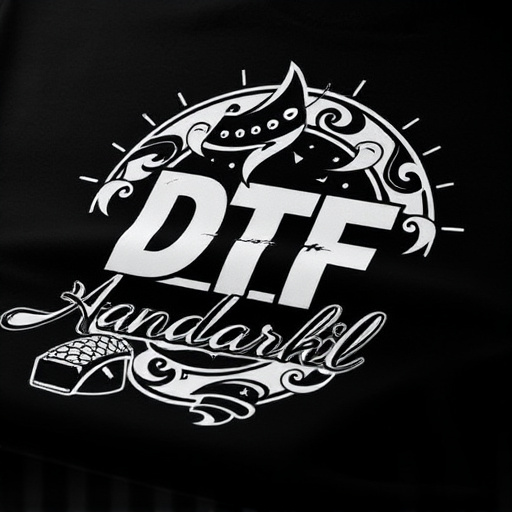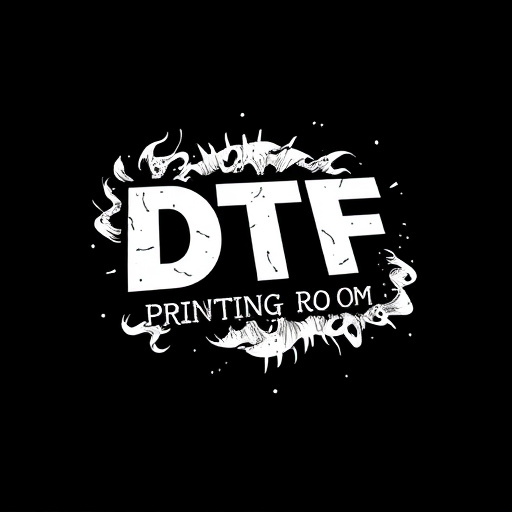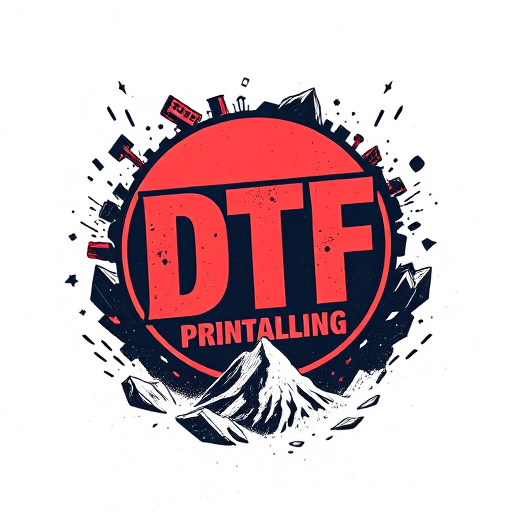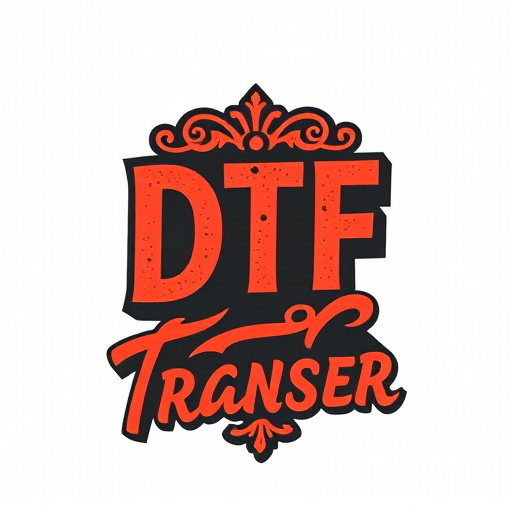DTF (Direct-to-Film) Printing is a cutting-edge technology revolutionizing print production by directly transferring ink onto film, suitable for various substrates like textiles and plastics. It offers faster production times, reduced waste, and exceptional consistency. Choosing the right film and substrate depends on intended use and artistic vision, with archival-quality films for high-resolution art and cost-effective options for signs. Design preparation involves using high-resolution (300 DPI or higher) files in CMYK mode, removing bleeding edges, and setting accurate color balance. Post-processing includes curing, removing excess ink, and peeling the transfer film. Proper post-processing, adhering to manufacturer guidelines, prevents residue and ensures vibrant colors. Regular cleaning and precise settings avoid common mistakes for high-quality DTF printing outcomes.
Direct-to-film (DTF) transfers are a game-changer for creating high-quality, durable prints on a variety of surfaces. This comprehensive guide provides essential guidelines for mastering DTF printing techniques. From understanding the fundamentals of DTF printing and selecting the right film and substrate to pre-preparing designs and step-by-step application of DTF ink, we cover it all. Learn best practices for post-processing, including curing and cleaning, to ensure optimal results. Avoid common mistakes and elevate your DTF printing skills today.
- Understanding Direct-to-Film Transfers (DTF Printing)
- Choosing the Right Film and Substrate for DTF Printing
- Pre-Preparing Your Design for Optimal DTF Transfer
- Applying the DTF Ink: Step-by-Step Guide
- Post-Processing: Curing and Cleaning for High-Quality Results
- Common Mistakes to Avoid in DTF Printing
Understanding Direct-to-Film Transfers (DTF Printing)

Direct-to-Film Transfers, or DTF Printing, is a cutting-edge technology revolutionizing the way we produce and apply prints on various surfaces. Unlike traditional printing methods that rely on intermediate media, DTF involves transferring ink directly onto a film, which is then pressed against the desired substrate to create a durable and high-quality print. This innovative process offers unparalleled versatility, enabling printers to work with a wide array of materials, from textiles and plastics to metals and acrylics.
DTF Printing’s appeal lies in its ability to deliver crisp, vibrant colors and precise detail, making it an excellent choice for both functional and decorative applications. Whether enhancing automotive components, personalizing electronic devices, or creating eye-catching promotional items, DTF Printing provides a game-changing solution. Its direct approach ensures faster production times, reduced waste, and exceptional consistency, making it a preferred method in today’s fast-paced, on-demand printing industry.
Choosing the Right Film and Substrate for DTF Printing

When it comes to DTF Printing, selecting the perfect film and substrate is paramount for achieving exceptional results. The choice depends on various factors, including intended use, desired print quality, and artistic vision. For instance, high-resolution prints meant for exhibition or fine art may require specialized, archival-quality films that offer vibrant colors and lasting durability. In contrast, more practical applications like signage or posters can benefit from cost-effective options that still provide clear images and adequate longevity.
Substrates also play a crucial role in DTF Printing outcomes. Different materials offer unique characteristics; for example, paper provides versatility and affordability but may not be as durable as vinyl or canvas. These choices directly impact the final product’s appearance, longevity, and potential for future display or use. Therefore, understanding your project needs is essential to selecting the right film and substrate for optimal DTF Printing results.
Pre-Preparing Your Design for Optimal DTF Transfer

Before applying a direct-to-film (DTF) transfer, preparing your design is a crucial step to ensure optimal results. Start by ensuring your artwork is in a high-resolution format suitable for printing, typically 300 DPI or higher. This ensures that the fine details of your design are captured accurately during the transfer process. Next, check for any potential issues like bleeding edges, where ink extends beyond the designed area, as this can cause problems during the printing stage.
Additionally, it’s essential to consider color profiles and modes. Using CMYK color mode is standard for DTF Printing since it matches the colors used in the printing process. Convert your design to this mode and ensure that the color balance is set correctly to avoid unexpected shifts in the final print. Removing any unnecessary elements or clipping paths can also streamline the transfer, ensuring a clean and precise application of your design onto the film.
Applying the DTF Ink: Step-by-Step Guide

Applying the DTF Ink: A Step-by-Step Guide
1. Prepare Your Surface: Start by ensuring your substrate is clean and free from any debris or oils. This could be a t-shirt, mug, or any other suitable material for DTF printing. Lightly roughen the surface if needed to enhance ink adhesion.
2. Load Ink and Set Parameters: Load the DTF ink into your printer, following the manufacturer’s guidelines. Adjust print settings, including temperature and pressure, according to the material you’re using. Settings will vary based on the type of substrate and desired print quality.
3. Position and Align: Place your substrate in the printing area, ensuring it’s properly aligned with the print head. Maintain a slight overlap between the print area and edges to prevent ink bleeding.
4. Initiate Print Job: Start the printing process. As the ink flows onto the substrate, maintain a steady pressure to ensure even coating without creating bubbles or splotches.
5. Curing Process: After printing, allow the ink to cure properly. This might involve heating the substrate for a specific duration, as indicated by your printer’s instructions. Curing ensures long-lasting color vibrancy and durability.
6. Post-Processing: Once cured, inspect your print for any imperfections. Lightly tap or blow on the printed area to remove any excess ink. Then, carefully peel away the film, leaving behind a crisp, direct-to-film transfer.
Post-Processing: Curing and Cleaning for High-Quality Results

After applying direct-to-film (DTF) transfers, proper post-processing is crucial to ensure high-quality results. The curing process plays a vital role in setting the ink and ensuring long-lasting durability. Different materials may require specific curing times and conditions, so it’s essential to follow manufacturer guidelines. This typically involves exposing the printed film to heat or UV light for a set duration, allowing the ink to fully bind with the substrate.
Cleaning is another critical step to achieve crisp and precise DTF Printing. Excess ink, dust, or debris can affect image quality and adhesion. A gentle cleaning process using recommended solvents or warm water ensures that no unwanted residue remains. This meticulous attention to detail guarantees that the final print will showcase vibrant colors, sharp details, and a professional finish.
Common Mistakes to Avoid in DTF Printing

Direct-to-film (DTF) printing is a powerful technique, but like any process, it’s not without its pitfalls. Many enthusiasts and professionals new to DTF often fall into common traps that can mar their prints and lead to wasted materials. One of the biggest mistakes is misunderstanding the calibration. Setting incorrect resolutions or failing to align the film properly can result in blurry or distorted images on the final product. Always double-check your settings and ensure precise calibration for optimal results.
Another frequent error is neglecting preparation and maintenance. DTF printing requires clean, dust-free environments to achieve crisp transfers. Failing to prep your workspace and keep your equipment clean can lead to smudges, streaks, or even failed prints. Regularly cleaning your press and ensuring proper film storage are essential practices to avoid subpar outcomes. Remember, attention to detail in these areas will significantly impact the quality of your DTF Printing projects.














